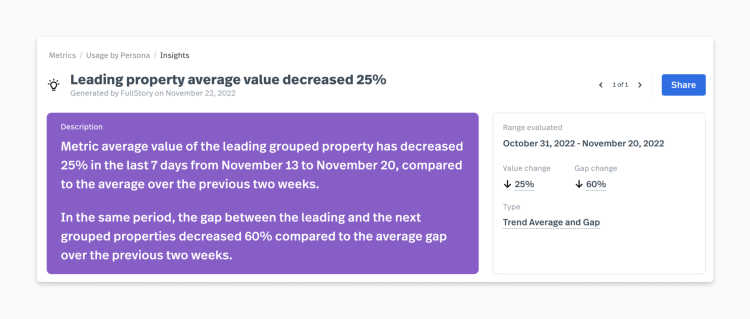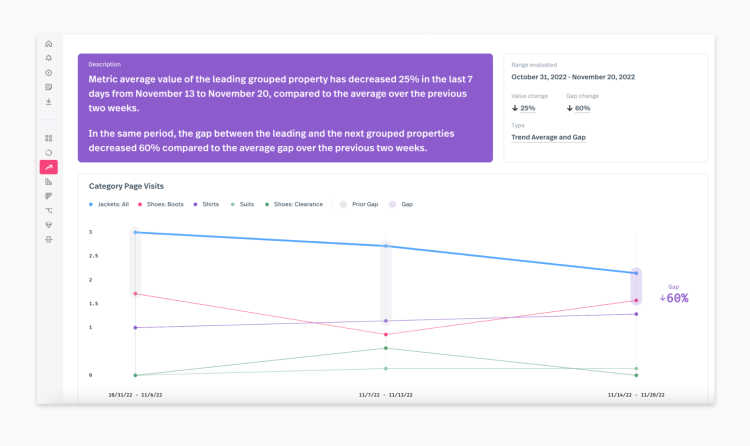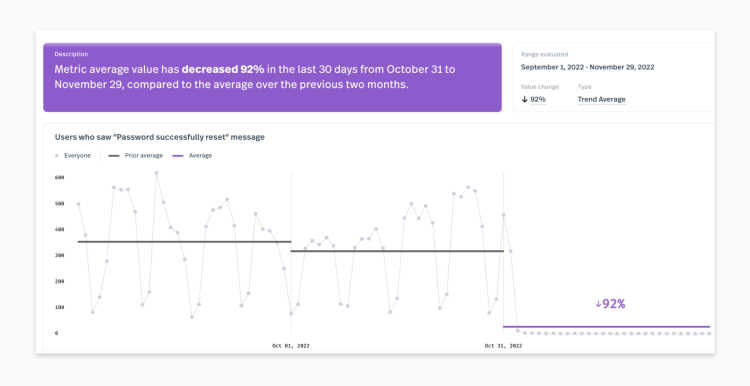As another year comes to a close, the holiday season creates a surge in the US’s digital economy. Whether it’s buying plane tickets home or shopping for that must-have toy for your kid, there’s a flurry of new digital purchases and experiences occurring every day in the final two months of the year.
Even with indications of slowed growth in certain global markets next year, it’s estimated that more than one in five purchases will occur online in 2023. For retail and ecommerce businesses in particular, making great impressions from start to delivery is paramount to a successful digital strategy.
A key piece of a successful strategy is finding ways to harness all of your company’s digital data to better understand your customers and prioritize making updates to improve the user experience. For major retailers who use Fullstory as their Digital Experience Intelligence (DXI) solution, there are several ways to search your site’s data and better assess areas that are either delighting or frustrating end users, including Conversions analysis, Funnels, and Dashboards.
The ins and outs of dashboards
While dashboards, in general, are great for watching KPIs and spot-checking any drastic data changes, they have some drawbacks. Often, dashboards:
Are narrow in focus, centering on a specific product area or customer segment.
Don’t include every possible metric that’s crucial to your business.
For metrics you want to investigate, Fullstory harnesses your complete digital experience data to surface insights, without requiring you to build a performance dashboard. Machine learning illuminates key changes in your user data and shows you how patterns are shifting, keeping historical data context in mind.
Here are three ways to get powerful insights that you can use to make the customer experience even better.
1. Evaluate site or product performance
In a 2022 Fullstory survey, respondents listed slow load times as the top reason for abandoning a site or app. To improve user retention, it’s critical to identify performance issues as they arise and fix them before they negatively impact your business.
And now that Google takes Page Experience into account when ranking websites, tracking your Core Web Vitals is even more crucial. Poor performance could cost you customers before they even make it to your site.
Areas of your site with a lot of media, third-party widgets, or other complicating elements should be carefully and constantly monitored for page load times. Here are two ways to keep a pulse on slow-loading pages:
Use your DXI solution to drill down into individual pages that are causing a spike in your average load time to identify the source of the issue.
Review recreated sessions where the user encountered the highest load times to better empathize with the customer and identify improvements you can make to the page.
These steps will help ensure that your users' experiences are as smooth as possible—both saving lost conversions and helping to retain existing customers through a seamless experience.
2. Watch for key changes in user preferences
While metric insights in Fullstory can reveal important, foundational data about site performance, they can also illuminate key changes to your customers' or users' preferences.
An unexpected drop in user preference data can point to valuable new insights about your personas' needs. For example, if the ranking gap between the high traffic of your most visited page and the rest of your site pages suddenly shrinks, this change in preferences might indicate a need for changes in the site layout to meet these new preferences.
In an ecommerce setting, this might look like a change in traffic to specific category pages—for example, visits to the Jackets page are steadily declining, while traffic to Boots has shot up. With the knowledge that their customers’ preferences have shifted in this way, the retailer may opt to adjust their homepage to feature boots instead of jackets.
3. Spot critical errors
It’s pretty much a no-brainer that resolving DX issues and errors faster saves time and money. The most important of these errors are those that prevent users from completing key workflows or crucial actions toward conversion—in other words, those that are directly tied to your bottom line.
Data shows that users have very little patience for digital frustrations. In a Fullstory survey, 75% of respondents said they are likely to abandon a transaction when they encounter a digital experience issue. And when competitors are a click away, even the most loyal customers aren’t immune to frustrating experiences.
For example, let’s look at a login page message when users or customers need to reset their password. If users who are attempting to reset their passwords suddenly aren’t seeing the “Password successfully reset” message, there could be one of two critical issues happening:
Either users are unable to change their password and log in due to a bug on your site’s end
Or the notification system that displays the message is currently broken.
Either way, this error will almost certainly result in frustration, abandonment, and lost revenue—or worse, lost trust.
Already an Advanced or Enterprise customer? Get started with metric insights.
If you're not already a Fullstory user, get a demo.






